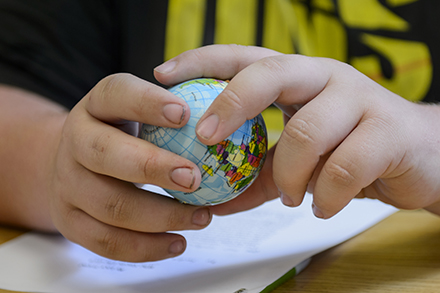The following post was written by members of the NCTE Standing Committee on Global Citizenship.
February—Black History Month—offers an opportunity to encourage good citizenship when it comes to issues surrounding race while still meeting your content standards. To encourage personal citizenship1, discuss with students how they can be friends with and support peers from backgrounds different from their own. Their everyday interactions with people are a way of being a good citizen.
To help students be participatory citizens, have them look at the history of laws and/or current laws and policies that may be unfair to people of color or of different faiths. When it comes to justice-oriented citizenship, students could be asked to analyze and think critically about the laws and policies they looked at before and come up with a variety of solutions.
Grades K–5
For students at this younger age, we think it’s important to encourage them to maintain friendships with children outside their race or religion. Have class discussions about what it means to be a good friend and why it can be a good thing to have friends who are different from you.
Books to consider: The Other Side by Jacqueline Woodson or Across the Alley by Richard Michelson
Grades 6–8
Middle school is an age where friendships can be complicated. It’s a great time to discuss with students how they choose friends. At this age they can start to think critically about whether or not their friend group is diverse and why. In addition to thinking about friendship you can have students conduct a mini research project. They can look through their curriculum and see how many black or nonwhite authors they have read in class, or people they have learned about in history, science, or math. This is a great way to look at your own curriculum and see who is represented and to consider why. Students can continue with the research project from the participatory citizen activity above and discuss and analyze their findings. They can determine whether or not they think there is an issue and write an argumentative paper as to why there is or isn’t. Perhaps if they all think there is an issue, they can come up with ways to fix it.
Book to consider: Romiette and Julio by Sharon M. Draper
Grades 9–12
In high school students are being asked to do more critical thinking and analysis. Consider having your students examine your school’s dress code. Is it fair to people of all races? Genders? Why or why not? Can they write a proposal for a revised dress code if it isn’t? A research project looking at a person of color would be a great project too. You can use a nonfiction anchor text to help students write the paper while still working on reading skills.
Books to consider:
- Death of a King: The Real Story of Dr. Martin Luther King Jr.’s Final Year by Tavis Smiley with David Ritz
- Hidden Figures: The American Dream and the Untold Story of the Black Women Mathematicians Who Helped Win the Space Race by Margot Lee Shetterly
- The Immortal Life of Henrietta Lacks by Rebecca Skloot
- I Know Why the Caged Bird Sings by Maya Angelou
Other Ideas from ReadWriteThink.org
- African American Read-In, All Grades
- Martin Luther King, Jr. and Me: Identifying with a Hero, Grades K–2
- Promoting Diversity in the Classroom and School Library through Social Action, Grades 6–8
- Biography Project: Research and Class Presentation, Grades 6–12
- Examining the Legacy of the American Civil Rights Era, Grades 11–12
Note
- As in our previous post, we draw on the three types of citizens proposed by Joel Westheimer and Joseph Kahne in their article “What Kind of Citizen? The Politics of Educating for Democracy” (American Educational Research Journal, Summer 2004, Vol. 41, No. 2, pp. 237-269): personally responsible citizens, participatory citizens, and justice-oriented citizens.

